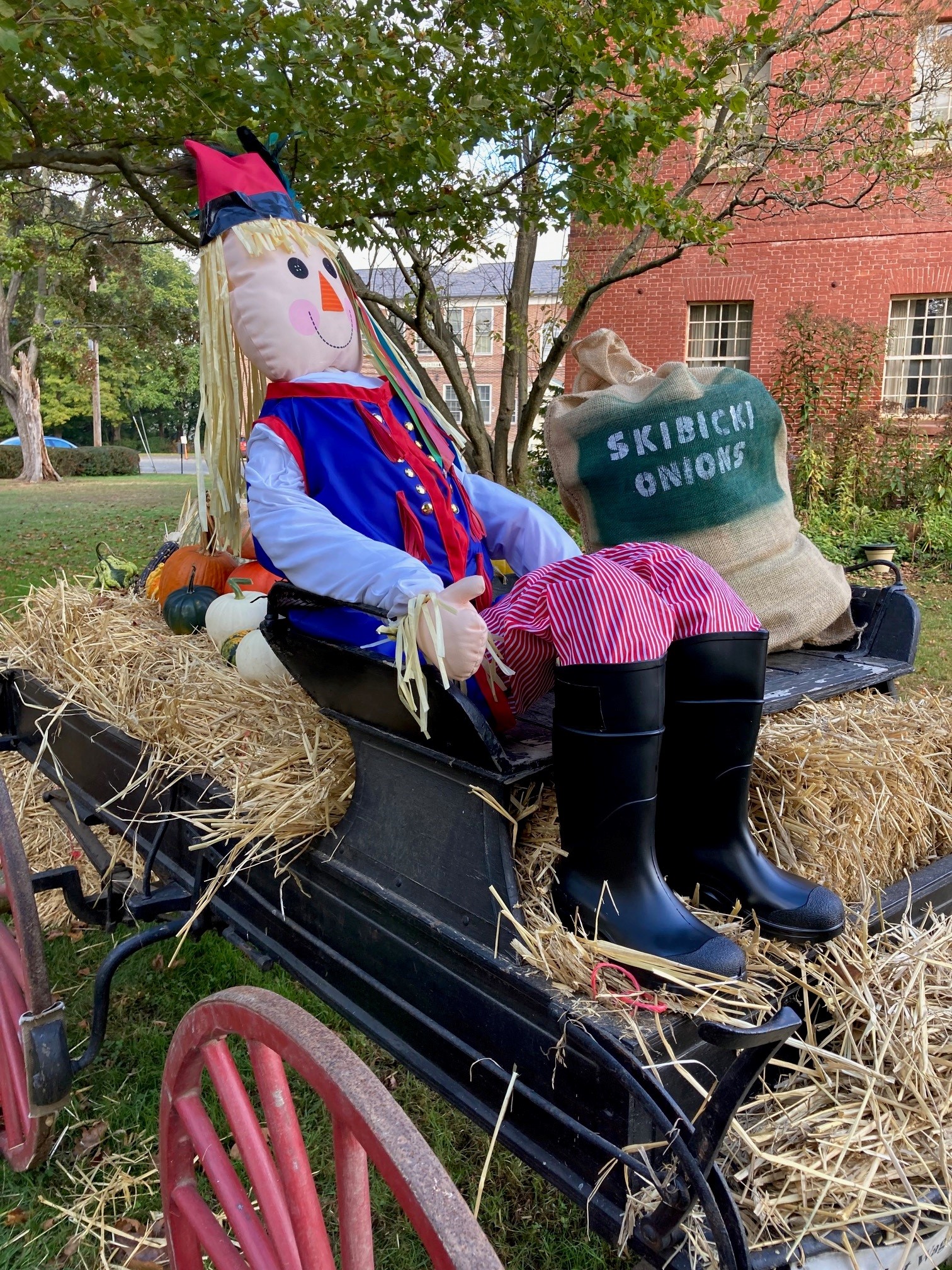 The NEW ROOTS IN RIVER BANKS exhibit begins on Memorial Hall Museum’s lawn with displays of old farm equipment owned/used by Eastern European farmers in the valley. It demonstrates the importance of these immigrants who came to the farming communities of Deerfield, Sunderland, and Whately, beginning in the 1880’s. The Civil War had devastated the population of young American men who farmed in the Connecticut River Valley. Other Yankee families chose to move to cities or to the west where they could farm on a larger scale. As New England farmers struggled to compete with those larger farms, they experimented with new crops such as tobacco and onions. These crops grew well in the soil here, but they were labor-intensive and farmers needed more hands. They looked to the immigrants from Eastern Europe, some of whom had left farms, lured to this area by our rich soil. Labor brokers recruiting in Poland, at New York’s Castle Garden, and at Ellis Island, brought many immigrants here to provide a much-needed workforce for our farms and factories.
The NEW ROOTS IN RIVER BANKS exhibit begins on Memorial Hall Museum’s lawn with displays of old farm equipment owned/used by Eastern European farmers in the valley. It demonstrates the importance of these immigrants who came to the farming communities of Deerfield, Sunderland, and Whately, beginning in the 1880’s. The Civil War had devastated the population of young American men who farmed in the Connecticut River Valley. Other Yankee families chose to move to cities or to the west where they could farm on a larger scale. As New England farmers struggled to compete with those larger farms, they experimented with new crops such as tobacco and onions. These crops grew well in the soil here, but they were labor-intensive and farmers needed more hands. They looked to the immigrants from Eastern Europe, some of whom had left farms, lured to this area by our rich soil. Labor brokers recruiting in Poland, at New York’s Castle Garden, and at Ellis Island, brought many immigrants here to provide a much-needed workforce for our farms and factories.
The young men worked as laborers at first, then often as sharecroppers. Young women also came from Eastern Europe, working in domestic jobs. The immigrants lived frugally, often bringing over extended family or friends, saving money by boarding and working together. Later they bought—and succeeded—at farming land that local farmers had deemed unprofitable.
Today some of those early immigrants’ descendants continue to farm in Deerfield with sustainable and innovative practices. They include the: Ciesluk, Galenski, Kolakoski, Melnik, Pekarski, Sadoski, and Yazwinski families.
Thanks to all of the wonderful supporters of this exhibit!
See the full list here.
Corn Sheller and Potato Scale
Corn Sheller, c. 1900
A husked ear of corn was inserted in the top; the wheel was turned; the kernels fell to a tray at the bottom; and the cob was ejected from the left side opening. The corn was used to feed chickens.
Potato Scale, c. 1900
This scale was used to accurately weigh bags of potatoes to a standard weight for sale to wholesalers and consumers.
From the South Deerfield farm of Charles & Julia Sadoski, immigrants from Russian Poland in 1902.
Loaned by Charlene & Ed Galenski
Market Wagon and Polish Scarecrow
Market Wagon, c. 1890
This horse-drawn wagon was used to transport locally harvested farm produce to sell door-to-door to customers.
Loaned by Mill River Farm Market
Polish Scarecrow
Stanislaus the scarecrow is wearing a Krakowiak costume representing the elaborate clothing worn to celebrations at Dozynki, the Polish harvest festival.



